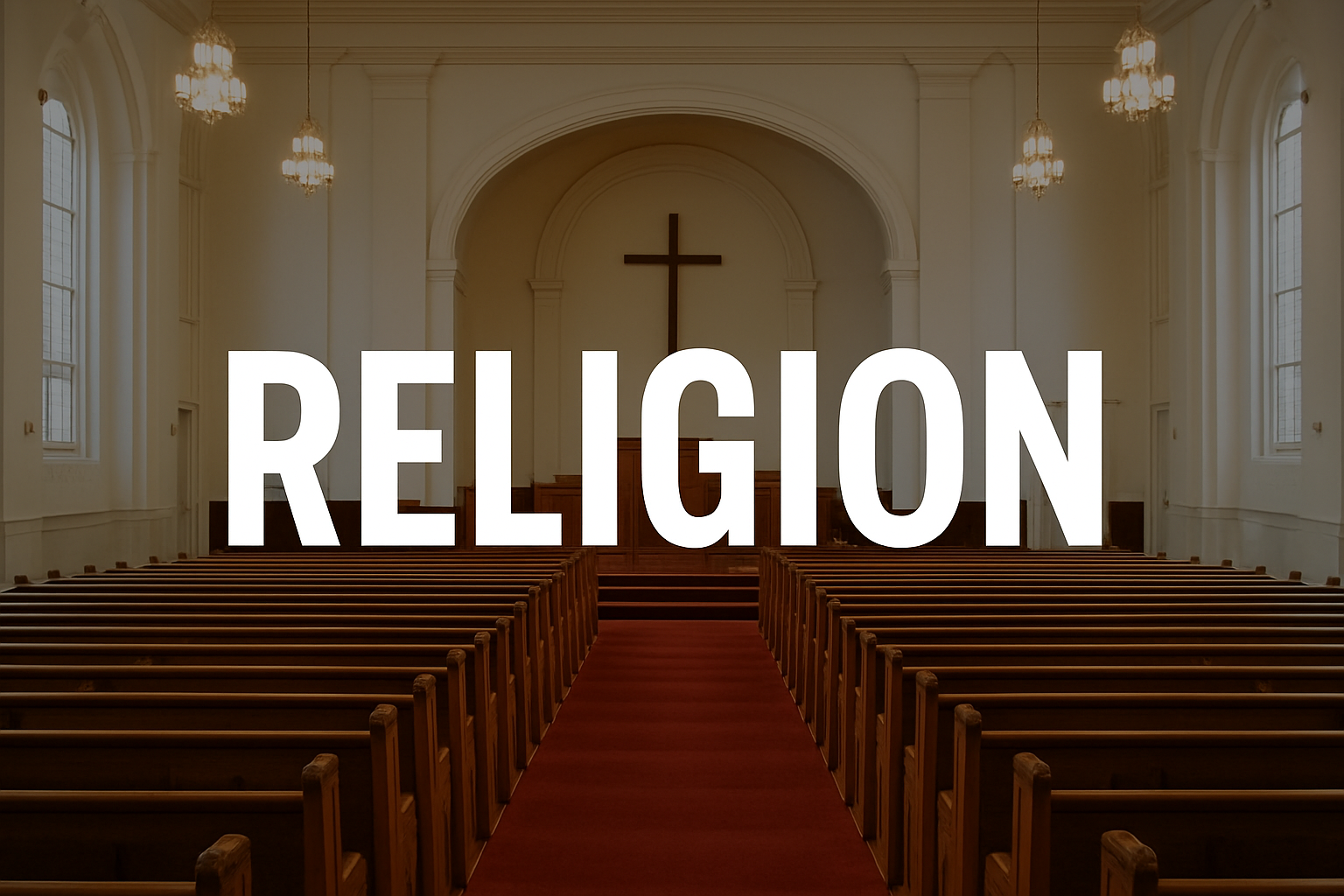Somewhere along the way, the modern evangelical church decided “religion” was a bad word. It became a theological four-letter word, lumped in with “legalism,” “ritualism,” and “the 8 a.m. organ service where no one smiles.” In its place, we were given the much warmer, cozier, Hallmark-ready term: relationship.
When I say “modern evangelical”, I mean less historically rooted types of Christians. I myself am a “modern evangelical”, technically speaking, but so is “Pastor” Karen at the gay-affirming UMC down the road. The issue is the term has been so watered down, that it’s virtually useless anymore.
This is not unique to the term evangelical, by the way, as trad-Caths (traditional Catholics) have to deal with Pope Francis and Nancy Pelosi.
But nonetheless, when I use it as a critique here, I am referring to less historically rooted expressions of Protestant Christian faith, like are found behind the wall of fog on the stage of many mega-churches today.
Now, there is nothing wrong with speaking about the believer’s relationship to God through Christ. But in the popular evangelical mouth, “relationship” hasn’t just been a friendly synonym—it’s become a deliberate replacement for “religion.” And that’s a problem. Because in ditching the term, we’ve ditched the substance behind it.
Historically, “religion” was not a Pharisee’s dirty word—it was a Christian’s badge of honor. Our fathers in the faith thanked God for it. One old prayer from The Valley of Vision begins:
“We bless thee for the souls thou hast created, for the holy Scriptures their instruction,
for laws of life and light,
for a revelation of thyself in the gospel,
for the institutions of religion…”
We celebrate the tome produced by our brother John Calvin: ‘The Institutes of the Christian Religion’, but reject the very title today, as well as much of the rich theological doctrines contained within.
Calvin actually defines what religion is in the Institutes:
“Here indeed is pure and real religion: faith so joined with an earnest fear of God that this fear also embraces willing reverence, and carries with it such legitimate worship as is prescribed in the law.”
— Institutes of the Christian Religion, 1.2.2 (Battles/McNeill edition, p. 43)
The Second London Baptist Confession explains “how to religion” very clearly:
“Religious worship is to be given to God the Father, Son, and Holy Spirit and to him alone4—not to angels, saints, or any other creatures.5 Since the fall, worship is not to be given without a mediator6 nor through any mediation other than of Christ alone.7” (22.2)
“The elements of religious worship of God include reading the Scriptures,16 preaching and hearing the Word of God,17 teaching and admonishing one another in psalms, hymns, and spiritual songs, singing with grace in our hearts to the Lord,18 as well as the administration of baptism19 and the Lord’s supper.20 They must be performed out of obedience to him, with understanding, faith, reverence, and godly fear. Also, purposeful acts of humblingawith fasting21 and times of thanksgiving should be observed on special occasions in a holy and religious manner.22” (22.5)
That’s Christian religion. That’s religious worship—God’s way, in God’s Word, to God alone.
To say that these men did not have a fruitful relationship with Christ because they recognized and appreciated formal Christian religion would be quite the accusation.
Post Tenebras Lux… Post Lux Tenebras
Modern evangelicalism has been steadily peeling away those structures for decades. The Jesus Movement of the ’60s, eager to cast off the “stodgy” trappings of their parents’ churches, began to equate formal religion with legalism. And the seeker-sensitive era put doctrine and discipline in the attic, replacing them with coffee bars and drama skits. And all the while, “relationship” became the flagship word.
We should be very hesitant to take our marching orders from hippies and mega-church Pastors before those of our Puritan forefathers.
We don’t need big beautiful churches anymore, ones that express the majesty of God, that ooze theology out of every nook and cranny. No, we can just set up camp in an old car dealership or a vacant store in the mall and praise the Lord in our flip-flops and Jesus-juke any historical confession of faith. If you show up once, you’re a member, and the elements of the Lord’s Supper are passed out like candy at a parade.
Don’t get me wrong, I am not coming after a small church body somewhere in a third-world country that does not enjoy the luxury of modern development or architecture. I am speaking about the West, where we were handed down these enormous blessings from God through the reformation, and saw fit to throw them away like an old hymnal in exchange for the new Hillsong jam-list.
We received such a beautiful, rich, historical protestant religion that cost blood, sweat, and tears to secure, and we shunned it for the sake of a “relationship”, which smacks of the new-age pagan proverb: “spiritual, not religious”.
Get Your Trunks; We’re Swimming the Tiber
But here’s the bitter irony—people actually crave structure. They long for rootedness, for historic confessions, for sacramental seriousness. So, when evangelicals gutted their own heritage and defined “religion” as “something only Pharisees like,” where did those people go? They wandered into the open arms of Rome and Constantinople—two religious systems happy to offer structure, beauty, and order… minus the true gospel.
This is a tragedy. Many of them would never have gone there if our churches hadn’t been so desperate to appear “unreligious.” By tearing down our own Reformed, biblical framework, we’ve shoved the spiritually hungry toward false gospels wrapped in ancient robes.
Rome’s boast is they are the “2,000-year-old faith handed down by the Apostles”. (Which is the siren song that bewitches many a young man today). Let’s just pretend no one notices that things like purgatory weren’t dogmatically required until 1439 (and then reinforced at Trent in 1563), the Immaculate Conception didn’t make the cut until 1854, and Mary’s bodily Assumption wasn’t official until 1950. That’s well over a millennium of church life before anyone had to believe such things under threat of anathema.
But never mind that. Slap some John Henry Newman’s “development of doctrine” on it, stir well, and voilà, the Apostles meant it all along.
Rome is bankrupt; there are dead men’s bones inside those whitewashed tombs.
They offer a veneer of Christian religion, but will lead you to hell. After all, Satan masquerades as an angel of light.
This is why so many gave their lives for the reformation, and why we should not let that sacrifice go in vain today.
True Religion
So no, we do not need less “religion.” We need the right kind of religion—biblical religion, Spirit-filled religion, Christ-exalting religion. Relationship without religion drifts into vagueness; religion without relationship calcifies into formalism. But when the two are joined together under the Lordship of Christ, they form the vibrant, structured, covenantal worship the church was always meant to have.
To put it bluntly: Jesus didn’t die to abolish religion. He died to redeem it.
Religion that is pure and undefiled before God the Father is this: to visit orphans and widows in their affliction, and to keep oneself unstained from the world.
James 1:27
“Relationship services” today look a lot like a rock concert followed by a motivational TED Talk from “Pastor” Karen. That is religion quite content to be stained by the world.
And for many disillusioned souls, it’s basically a non-stop flight to Rome. The same Rome our spiritual forebearers shed much ink and blood to get us away from.
We don’t have to reinvent the wheel to appease the culture—especially if it comes at the expense of the flock that hungers for the formal, reverent worship of God and the order He has given His church.
Let us return to our historical roots; let us return to our structure, our tradition, our religion.





